calsfoundation@cals.org
Booneville (Logan County)
County Seat
| Latitude and Longitude: | 35º08’24″N 093º55’17″W |
| Elevation: | 511 feet |
| Area: | 3.94 square miles (2020 Census) |
| Population: | 3,809 (2020 Census) |
| Incorporation Date: | June 6, 1878 |
Historical Population as per the U.S. Census:
|
1810 |
1820 |
1830 |
1840 |
1850 |
1860 |
1870 |
1880 |
1890 |
1900 |
|
– |
– |
– |
– |
– |
– |
– |
275 |
496 |
988 |
|
1910 |
1920 |
1930 |
1940 |
1950 |
1960 |
1970 |
1980 |
1990 |
2000 |
|
1,631 |
2,199 |
2,099 |
2,324 |
2,433 |
2,690 |
3,239 |
3,718 |
3,804 |
4,117 |
|
2010 |
2020 |
|
|
|
|
|
|
|
|
|
3,990 |
3,809 |
|
|
|
|
|
|
|
Booneville, one of the two Logan County seats, is a progressive community with a wide range of facilities in addition to the normal municipal services. Its commercial activity consists of retail stores and small industries. Booneville supports a community center, a senior citizens center, a community hospital, and a municipal airport. Recreational facilities include two parks and a baseball complex.
Louisiana Purchase through Early Statehood
One of the oldest towns in western Arkansas, Booneville was founded about 1828, when Walter Cauthron built a log cabin and opened a store near the Petit Jean River in what was then Crawford County. According to the Cauthron family tradition, he intended to name the settlement Bonneville in honor of his friend Captain Benjamin Bonneville, an army officer stationed at Fort Smith (Sebastian County), with whom he shared an interest in exploring Arkansas Territory. At some point, the spelling changed, and the settlement became known as Booneville. According to another theory, the town was named for Daniel Boone, a kinsman of the Logan family who settled in the area in the 1830s.
In 1833, when Scott County, including what is now south Logan County, was formed from Crawford County, Booneville became the county seat. In 1837, the Petit Jean Post Office was established at Booneville. The name was changed to Booneville Post Office that year. On August 9, 1837, the Arkansas Gazette carried an announcement that lots in Booneville would be sold at auction during the next term of the Scott County Circuit Court. The Gazette reported on September 19 that twenty-one lots had been sold in Booneville for a total of $1,150.
Civil War through Reconstruction
When the issue of the secession of Southern states was raised in the 1850s, Booneville residents were divided in support of the Union and Southern causes. When the Civil War broke out in 1861, Booneville residents enlisted in both armies. In support of the Confederacy, a military unit called the Booneville Rifles was formed that marched to Bentonville (Benton County) to join Confederate forces mustered there. As the war progressed, Union and Confederate armies, vying for control of Fort Smith (Sebastian County) and the Arkansas River, moved about the countryside confiscating supplies for troops and animals. Bushwhackers and jayhawkers looted households, often killing the men of the house. Although no military conflict occurred around Booneville, both armies camped there from time to time.
After the war, Reconstruction government was imposed on the Booneville area, as was the case throughout the South. In 1871, Sarber County was formed from parts of Franklin, Johnson, Scott, and Yell counties. The northern part of Scott County that included Booneville became part of the new county. Sarber County, named after a prominent Republican carpetbagger, was renamed Logan County in 1875 after the Democratic Party regained control of the legislature.
By the time Booneville was incorporated in 1878, it had become a thriving community with several general stores, a cotton gin, a drugstore, a blacksmith shop, and other businesses.
Gilded Age through Early Twentieth Century
In 1898, the Choctaw, Oklahoma, and Gulf Railroad, later acquired by the Rock Island Railroad, constructed a line between McAlester, Oklahoma, and Little Rock (Pulaski County) that passed through Booneville. Booneville was designated as a division point for crew changes. For the next seventy-five years, the railroad was a major factor in the town’s economy.
When the tracks were laid, the town was south of the tracks. The north side of the tracks consisted of farmland. The Choctaw, Oklahoma, and Memphis Townsite Company bought the farmland, platted a town site, and offered lots for sale. To encourage the sale of lots north of the tracks, the company offered free lots to owners of businesses south of the tracks if they would move their businesses north of the tracks. The company offered to move the store buildings free of charge. As a result, the business section of Booneville relocated to the north side of the tracks. The town was reincorporated in 1899 to reflect the addition.
The early 1900s brought significant change to Booneville. In 1901, Logan County was divided into two judicial districts, each with a county seat. Paris remained the county seat for the Northern Judicial District, and Booneville became the county seat of the Southern Judicial District. A brick courthouse was built in Booneville, and all county business in the Southern Judicial District was conducted in the county courthouse in Booneville.
In 1909, the Arkansas State Tuberculosis Sanatorium was built near Booneville, and the first patient was admitted on August 2. The sanatorium proved to be a vital asset to the economy. It provided not only employment for many workers but also a market for local farm products for many years.
During the Depression of the 1930s, economic conditions in Booneville took a sharp downturn. Severe droughts devastated crops, and, although federal public works projects provided a few jobs, employment opportunities in Booneville were scarce. Struggling to earn a living in such a depressed economy, many families gave up and moved to other areas to find work.
The most notable event in Booneville history occurred on Saturday, July 9, 1938, when a train carrying President Franklin D. Roosevelt made its only stop in Arkansas at Booneville during the president’s nationwide whistle stop campaign for his third term. He appeared on the platform of the last train car and made a short speech to a crowd of about 3,000.
World War II through the Modern Era
When the United States entered World War II in 1941, most of the town’s young men were inducted into military service. Many families moved to other states to work in factories producing war materiel. After the war, many veterans moved elsewhere for better jobs. Those who had moved away to take jobs in factories remained there as war plants converted to peacetime production. Job opportunities in Booneville were limited, and the population began to drop. Faced with a declining population and a bleak economy, community leaders began to explore ways to revitalize the economy. The Booneville Industrial Development Commission was organized in the early 1950s to attract industry.
Their efforts paid off when, in 1955, the 200-employee Ace Comb Company, a division of the American Hard Rubber Company, moved its plant from New Jersey to Booneville. For several years, the company played an important role in the economy. In the late 1960s, the Goody Corporation bought the company, and the comb plant was later moved to the East Coast.
In the years that followed, other industries moved to Booneville. In the early 1970s, Wolverine Toy Company, a producer of metal toys, moved its operations from Pennsylvania. The company later switched to the production of plastic toys and was renamed Today’s Kids. The company ceased operations in Booneville in the 1990s. In the 1970s, Del Pero Monden, a meat processor, moved its operations to Booneville from California. The company processed meat products for sale to fast food companies such as McDonald’s and Wendy’s, as well as other types of restaurants. Cargill later acquired the company, and employed about 800. However, the Cargill plant burned on March 23, 2008, and Cargill later announced that it would not rebuild the plant. Other smaller industries in Booneville are a producer of electronic elements, a manufacturer of food wrap, and a restorer of vintage automobiles. Rockline Industries built a wet-wipes and coffee-filter manufacturing facility in Booneville in 2008; the facility employs 120.
Timber operations have played a substantial role in the town’s economy. Logs harvested in the Ouachita National Forest are hauled to a large sawmill in Booneville.
In the 1970s, Booneville suffered two major economic setbacks. The Rock Island Railroad ceased operations, and the tuberculosis sanatorium closed. Despite these blows, Booneville continued on its course of community improvement. The industries were thriving. The sanatorium facilities were transferred to the Arkansas Department of Human Services for use as a facility for the care and training of developmentally disabled young adults. The population began to increase as retirees moved to Booneville attracted by the leisurely pace of small-town life and by nearby recreational areas providing facilities for hunting, fishing, camping, and other outdoor activities. In 1980, the Dale Bumpers Small Farms Research Center was established in the area. In 2005, Booneville was one of seventy-five communities to receive the Arkansas Community of Excellence Award.
Education
From its early days, Booneville has been noted for its support of schools. In 1874, in response to the need for a school of higher learning in western Arkansas, the Fort Smith District of the Methodist Episcopal Church, South, authorized establishment of the Fort Smith District High School. Because the district could provide no monetary support for the school, the school’s location was to be determined by the degree of local financial support. Booneville was selected after Methodist church members in Booneville offered to donate the land, building materials, and labor. The school was to be supported by tuition. Students came from all over western Arkansas to board with Booneville families and attend the school that offered an advanced curriculum, including Latin, German, advanced mathematics, literature, and music. The school functioned until about 1900.
After the school closed, a group of residents formed the Booneville Education Association and, by private subscription, acquired nine acres in northwest Booneville for the Booneville Co-Educational Institute. This school’s curriculum was more advanced than that of the public schools. Graduates were admitted as sophomores at the University of Arkansas (UA) in Fayetteville (Washington County). In 1920, state funds became available for the support of public high schools, and the Booneville Co-Educational Institute’s property was transferred to the Booneville school system to become Booneville High School. For many years, the Booneville school system was located on this site. In the 1970s, new facilities for the junior high and high school were built on the east side of town. The elementary school remained on the old site.
Famous Residents
Several Booneville people have achieved prominence. The most notable sports figures are baseball players Jay Hanna “Dizzy” Dean and Paul Dee “Daffy” Dean, who were born in Lucas, a community west of Booneville. In the 1930s, the Dean brothers were the idols of the sports world as players for the St. Louis Cardinals. Another Booneville native, Aaron Ward, achieved fame as a player for the New York Yankees in the 1920s.
In the military field, several generals have hailed from Booneville. General John Paul McConnell served as chief of staff of the air force from 1964 to 1969. His personal and military memorabilia is displayed in the Booneville Public Library. Brigadier General William Corinth Bacon of the U.S. Air Force saw action in Europe in World War II and later commanded units of the Strategic Air Command. Major General Raymond Pendergrass served as adjutant general of Missouri, while Lieutenant General Mark H. Berry served as adjutant general of Arkansas.
Miss America 1982 Elizabeth Ward Gracen spent her childhood in Booneville. Although she was born in a hospital in Ozark (Franklin County), her parents lived in Booneville at the time of her birth.
Kim Foster, model and actress, made several appearances on television in the 1990s, including a starring role in Dallas, a popular dramatic television series. Paul E. Danielson, justice on the Supreme Court of Arkansas, established his law office in Booneville.
For additional information:
Historical and Biographical Memoirs of Western Arkansas. Nashville, TN: Southern Publishing Company, 1898.
Logan County, Arkansas: Its History and Its People. N.p.: Logan County Historical Society, 1987.
Patricia L. Curry
Logan County Historical Society
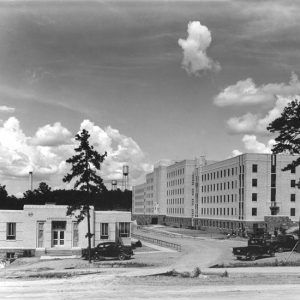 Arkansas Tuberculosis Sanatorium
Arkansas Tuberculosis Sanatorium 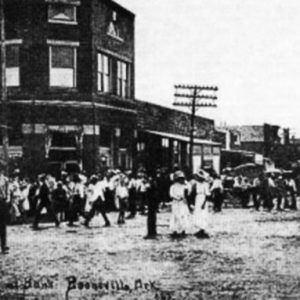 Booneville
Booneville 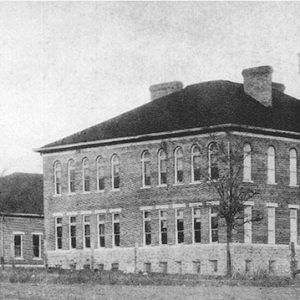 Booneville High School
Booneville High School 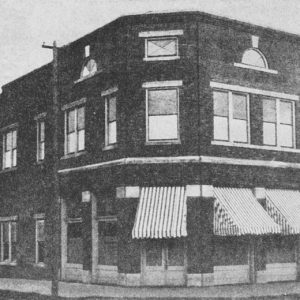 Booneville Bank
Booneville Bank 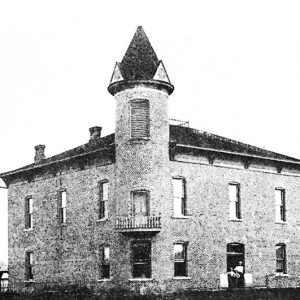 Booneville Courthouse
Booneville Courthouse 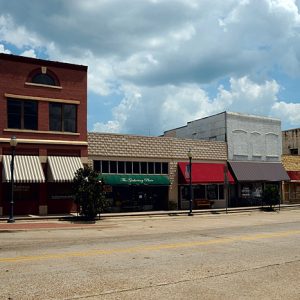 Booneville Street Scene
Booneville Street Scene  Booneville Street Scene
Booneville Street Scene  Booneville Street Scene
Booneville Street Scene  Globe Hotel
Globe Hotel 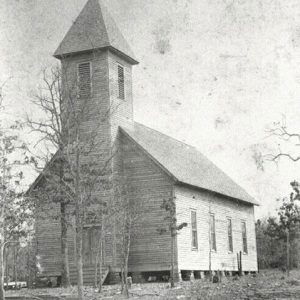 Ione Baptist Church
Ione Baptist Church 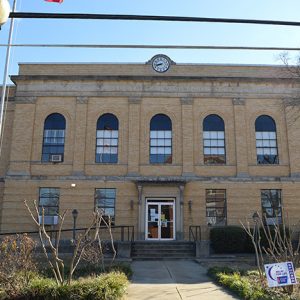 Logan County Courthouse, Southern District
Logan County Courthouse, Southern District 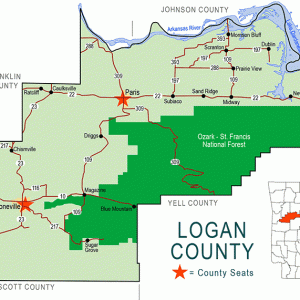 Logan County Map
Logan County Map  Parish and Ross Drugstore
Parish and Ross Drugstore  Research Center Headquarters Sign
Research Center Headquarters Sign 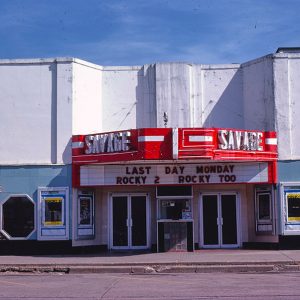 Savage Theater
Savage Theater 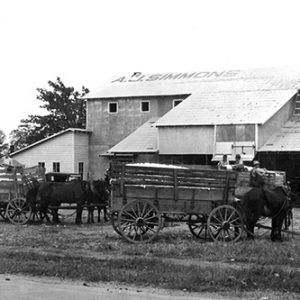 Simmons Cotton Gin
Simmons Cotton Gin 



Comments
No comments on this entry yet.